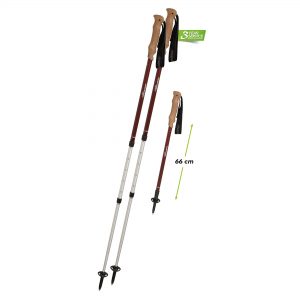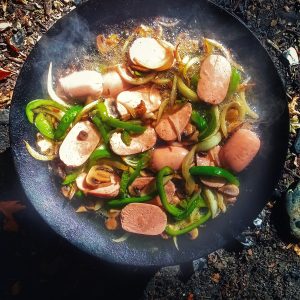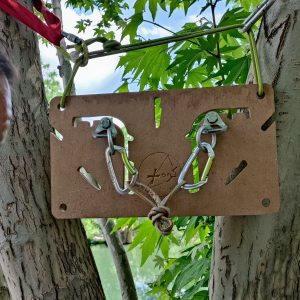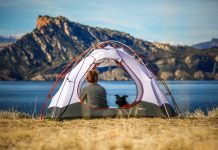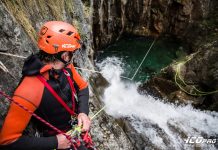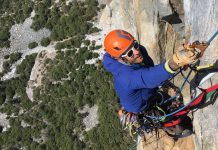[ad_1]
INTRODUCING THE
UIAA ALPINE SUMMER SKILLS SERIES
The UIAA Alpine Skills Summer guide was first published in 2015. Produced in collaboration with the Petzl Foundation, the guide and has been well received worldwide and is currently available in five languages. To mark the launch of a digital version of the publication, the UIAA is running a series of articles from the guide designed to help hikers, climbers and mountaineers develop their skills and knowledge of the mountain environment.
The guide was developed specifically as a reference document for trip leaders and instructors of club and federations within the UIAA – an aide memoire for climbers and mountaineers who attend training courses delivered by instructors and guides who have gained qualifications accredited by the UIAA. Now open to the wider climbing and mountaineering world, the handbook’s four modules focus primarily on summer activities. However, a specific winter guide is currently in production.
“The UIAA Alpine Handbook has been immensely popular: both the English and French language versions print first editions sold out,” explains Steve Long, Chair of the UIAA Training Panel. “Korean and Turkish versions has now been published. Many trainees will still want to read a paper version, but the digital version will be cheaper to distribute and include hyperlinks to the latest information from UIAA commissions and other leading authorities in order to ensure that we have the best information and advice available for safety, sustainability and sport.” For further details on the UIAA’s work in training please click here for our interview with Steve Long.
To mark the launch of a digital edition of the handbook, the UIAA is making specific articles available as part of its Summer Skills series. This first extract concerns ‘Objective Hazards’ and features as part of a chapter dedicated to the natural environment reminding every mountaineer the importance not only of developing their athletic and technical skills, but the importance of reading mountain landscapes.
The digital edition of Alpine Skills: Summer, an downloadable application which permits free updates to content, can be purchased here.
EXTRACT 1:
IDENTIFYING THE DANGERS ASSOCIATED WITH OBJECTIVE HAZARDS
Mountain travel involves several types of hazards. Namely:
- Dangers related to the incorrect use of equipment, improper technique, or the mountaineer’s lacking the requisite skill level for the desired climb.
- Dangers inherent to the natural environment, aka objective hazards, over which we have little control.
This extract focuses on the dangers associated with objective hazards. By first learning to recognize these dangers, you can significantly reduce your exposure to them. Then, taking these dangers into account, you can work to reduce the risk level and potential consequences during your itinerary.
Rockfall
Rockfall may occur on walls/faces as well as on low-angle terrain. Falling rocks can threaten mountaineers and climbers as well as hikers. Certain places and certain conditions are more conducive to rockfall.
- Unstable boulders (moraines) or cliffs and walls composed of brittle or more fractured rock (e.g., weathered limestone).
- Natural features favouring the channelling of stones (ravines, couloirs, gorges or canyons).
- Areas of loose or poor-quality rock where the snow cover has recently melted.
- High temperatures at altitude, causing ice or permafrost to melt.
- Presence of climbers, hikers and wildlife uphill, higher on the slope.
- High winds or rain during an intense thunderstorm.
Falling seracs
Seracs can fall at any time, as it’s glacial movement that causes them to calve off and topple. Wherever possible, avoid travelling under seracs. If you must travel under seracs, minimize your exposure by taking the following precautions:
- Carefully observe the fall line and deposit area. Evaluate possible escape routes that let you evade or turn back from a falling serac.
- Don the proper gear/equipment before continuing (are crampons or adjustments to your tie-ins needed?).
- Move quickly and calmly without stopping, and set a sustainable pace.
- Move one rope team at a time, maintaining distance between teams to limit the number of people exposed to serac fall at any one time.
Cornices
Like seracs, cornices can break off at any time. They can also collapse under a mountaineer’s weight. To reduce the risk:
- Avoid travelling under the potential trajectory of a falling cornice.
- Assess the cornice’s size from a safe location off to the side (e.g., a rock summit).
- When traveling along a corniced ridge, maintain a healthy distance from the edge. Depending on the size of the overhang, cornices can sometimes collapse several meters behind the crest. Do not blindly follow footprints venturing too close to the cornice edge.
- If necessary, protect yourself using snow anchors and a rope (refer to “Equipment for glacier travel” in the Alpinism Module).
Avalanches
In winter, avalanches are a major concern for mountaineers, climbers and hikers alike. They also remain a considerable risk throughout the summer. High in the mountains—above 3,500 meters in the Alps—winter conditions become common in midsummer after a prolonged period of bad weather. As in winter, a passing mountaineer may trigger an avalanche that causes an accident. Specifically, a small snow slide during the day’s warmest hours may be enough to destabilize a roped party.
Basic precautions include:
- A night departure when attempting a snow climb. Verify the altitude of the 0° isotherm.
- Increased vigilance in the high mountains after a period of bad weather. Allow enough time for the snowpack to stabilize — a few warm days should suffice in summer.
Crevasses
Snow can conceal glacial crevasses. Adopt proper rope technique (refer to “Roping up” in the Alpinism Module, chapter 2). In case of a fall, be proficient with crevasse-rescue technique to rescue yourself or a friend (refer to “Glaciers,” earlier in this module; and “Crevasse rescue,” in the Alpinism Module).
Bad Weather
In the mountains, bad weather can have serious consequences. Refer to the “Meteorology,” “Orientation” and “Adapting to the Environment” sections in this module to learn how to avoid or deal with problematic situations relating to the weather.
The English-language version of the Alpine Skills: Summer guide was translated by the Alpine Club of Canada (ACC).
TRAINING & SKILLS PARTNER
[ad_2]




